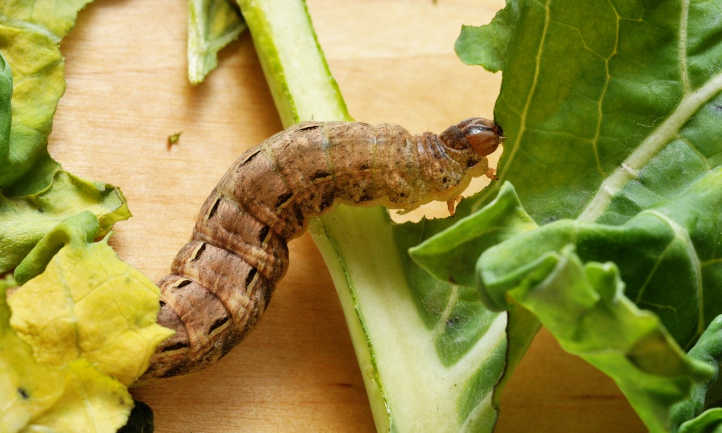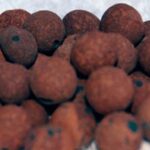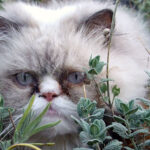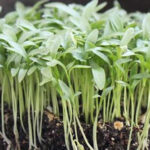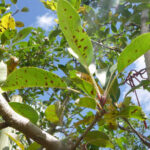The cutworm is a pervasive pest that slices through plant stems much like scissors. Cut worms are the larvae of cutworm moths. These insect pests have many hosts, but all come from night-flying moths in the Noctuidae family. These moths sweep in at night to lay their eggs, resulting in significant crop damage.
Because there are many different kinds of cutworm species, we at Epic Gardening have dedicated a piece to the most common species. While they may not be a problem initially, they’ll quickly feed and devastate young plants, and sometimes entire plants.
So let’s discuss how to stop cutworms, and prevent them from ruining what could be a productive season.
:
Cutworms Overview
| Common Name(s) | Cutworm, cut worm, miller moth, army worm, cotton bollworm, old world bollworm, scarce bordered straw, corn earworm, tomato fruitworm, tomato cutworm, dingy cut worm, bent-line dart, dark sword-grass, black cutworm, turnip moth, heart and dart, catapult moth, large yellow underwing, winter cut worm |
| Scientific Name(s) | Varying classifications |
| Family | Noctuidae |
| Origin | Depends on type |
| Plants Affected | Most food crops, cereal crops, some fruit trees, other production crops like tobacco, coffee, and cotton, and a variety of nonedible plants |
| Common Remedies | Bacillus thuringiensis (BT) sprays, diatomaceous earth, baits, collaring plants, beneficial nematodes, parasitic wasps, birds/toads, remove plant debris from the garden |
What Is A Cutworm?
All cutworm species are the larval soft bodied insects of any adult moth in the Noctuidae family. These lay greenish to whitish eggs in large masses at night, while most gardeners are sleeping. When the eggs hatch, young larvae emerge to feed on varying host plants depending on their species. There are two main types of cut worms: those that feed solitarily, and those that feed in large groups. The latter group of these are called army worms, due to their communal behavior.
Cutworms curl into a C-shape on their sides when they’re disturbed. They are called cutworms because as the young larvae feed, they slice through plant stems or branches, effectively cutting and slicing away plant parts.
Types of Cutworms
While this is not an exhaustive list, it covers the most common cutworm species and their host plants. As you’ll notice different species have specific hosts. Read through this to identify which type of these frustrating pests you’re dealing with.
Euxoa auxiliaris, ‘Army Cutworm’, ‘Miller Moth’
Army cutworms are a common pest throughout the western and prairie regions of the United States. Their favored foodstuffs include wheat and oats. In late June or early July, the miller moth migrates to alpine regions to escape the summer sun, and then returns in the fall. Up to 72% of the moth’s body weight is fat, making it a rich food source for black or brown bears. Army cutworms have the highest known body fat percentage of any animal.
Helicoverpa armigera, ‘Cotton Bollworm’, ‘Old World Bollworm’, ‘Scarce Bordered Straw’
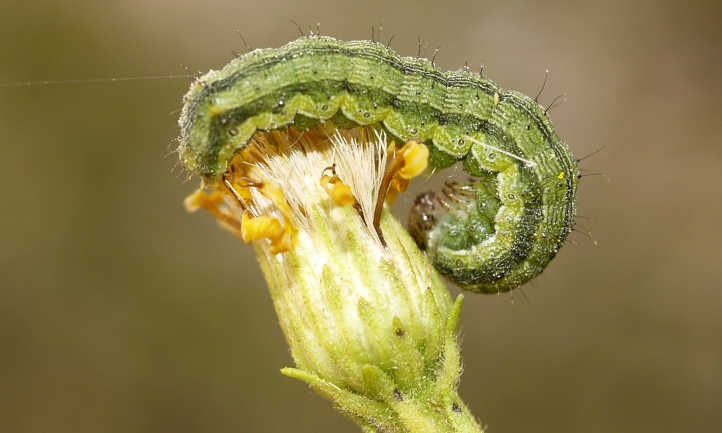
This species is a major agricultural pest throughout Asia, Europe, Africa, and Australia, and has spread to Brazil. The ‘cotton bollworm’ is a major predator on cotton plants, but also consumes other food crops and foliage.term ‘cotton bollworm’, it is a major predator on cotton plants, but also will happily consume a variety of food crops or other plants.
Helicoverpa zea, ‘Corn Earworm’, ‘Tomato Fruitworm’, ‘Tomato Cutworms’
Tomato cutworms are widespread throughout the Americas, but they don’t spread into Canada or into Alaska. They’ve slowly developed resistance to a number of agricultural insecticides, which complicates their control or eradication. They’ll dine on all types of tomatoes.
Feltia jaculifera, ‘Dingy Cutworm’, ‘Bent-Line Dart’
Another North American species, the dingy cutworm feeds on more than 40 varieties of plants, including field crops like alfalfa and wheat, assorted vegetables, and a selection of flowers. If you’re growing alfalfa, be vigilant of the dingy worm.
Agrotis ipsilon, ‘Dark Sword-Grass’, ‘Black Cutworm’, ‘Attack Cutworms’
The black cutworm can be found worldwide, although it’s less common in some tropical regions or colder areas. It’s more widespread in the northern hemisphere than in the southern, but appears in both. In the midwestern US, the black cutworm is a severe problem for famers who love growing corn. It’s also problematic in other food crops. The Minnesota Extension office has a great outline on Black cutworms here.
Agrotis segetum, ‘Turnip Moth’
This species is very common in Europe, but has also spread to Africa and Asia. It’s not presently believed to be in the United States. The turnip moth is considered to be particularly dangerous to cereal crops and root vegetables.
Agrotis exclamationis, ‘Heart And Dart’
The heart and dart is common in the Palearctic ecosystem, spanning from Ireland all the way to Japan. It consumes everything from lettuces through root crops, cereals and vegetable plants.
Serrodes partita, ‘Catapult Moth’
Common to Australia, India, Sri Lanka, Indonesia, and most of Africa, the catapult moth is a fruit-loving species. It cuts through young saplings of peach and citrus trees and a variety of other plants from that area of the world.
Noctua pronuba, ‘Large Yellow Underwing’, ‘Winter Cutworm’
Abundant throughout the Palearctic ecozone, Europe, the Middle East, and unfortunately introduced to North America in the 1980’s, the winter cutworm moth is one of the largest covered in this piece. Widely known as an agricultural nightmare, this insect preys on a wide variety of root and vining crops, including tomatoes, grapes, potatoes, and carrots, among others. They are difficult to eliminate once a large population is visible in a given area.
Argotis orthogonia, ‘Pale Western Cutworm’
This cutworm moth is found in dry areas of North America, from the Upper Great Plains to southern Canada, bordering at California. These cutworms do the most damage to grasses and forbs. They’re particularly damaging to winter wheat and small grains. There have also been reports of these garden worms feeding on sugar beets and corn.
Nephelodes minians, ‘Bronzed Cutworm’
The adult of this species is commonly referred to as the ‘Shaded Umber Moth’. They’re found throughout the US, excepting Florida and a few other states in similar tropical and subtropical climates. The main bronzed cutworm host plants are corn and cereal crops.
Xestia c-nigrum, ‘Climbing Cutworms’
Another cutworm species that lives in the Pelearctic region, it is also found in varying parts of North America, excluding many southern US states. They consume many different plants (too many to name here). A large portion of these are forbs, cereals, alliums, and nightshades.
Apamea devastator, ‘Glassy Cutworm’
This cutworm is found in the northeastern parts of North America, namely in eastern Canada and the northeast US. The larvae of this species feed on the roots of plants, as they develop underground. Their main hosts are grasses in the region.
Peridroma saucia, ‘Variegated Cutworm’
The variegated cutworm is the larvae of the underwing moth, which is common on every continent except Australia. These pukey green caterpillars have a defined white stripe down their back and seem almost indiscriminate in their hosts, feeding on lots of different fruit, veggies, weeds, and grasses.
Life Cycle of Cut Worm Moths
As you may have noticed in the last section, some cutworms develop above ground, and others develop underground. However, most species have a very similar lifecycle. Let’s discuss the cutworm life cycle, from egg to moth.
The female moths lay eggs, producing hundreds over the span of their lifetime. The location of the cutworm eggs varies by species. Some egg laying occurs on the underside of leaves, sometimes on top, and occasionally on stems or stalks. Generally, the eggs hatch in between three and five days. Once the young cutworm caterpillars have emerged, they go through between four and six different instars (larval stages) depending on the species. The cutworm larvae are quite small when first hatched, but a cutworm larva will gradually get larger with each instar, reaching a body length of two inches. Several species are grey, green, yellow, or brownish.
During the larval stage cutworms are actively feeding, doing the most devastating damage. In the first couple of instars, there is a huge population in a relatively small area around the host plant. Some species of cutworm caterpillar are aggressive and have cannibalistic tendencies, so the population may reduce significantly by the third or fourth instar.
When the instars are complete, the caterpillars form a cutworm pupa. Generally, within a couple of weeks to a month, they emerge from their cocoon to begin life as adult moths, continuing the cycle. Cutworm adults and larvae overwinter in sheltered locations, occasionally putting themselves into a delayed developmental stage or dormancy called diapause. Once they enter diapause, they can only emerge when conditions are favorable.
Identifying Cutworm Damage and Their Habitat
Not only do cutworms tend to hang out on their hosts where they damage garden plants they feed on, they also do their egg laying in the same area. They poop there too, leaving black pellets as they feed. Many live in high grass or weeds. Some overwinter in dry soil, dead plant material, and plant debris. If you see a caterpillar, disturb one by poking it with a stick. A resulting C-shape is the biggest sign that’s what you’re dealing with cutworms. Habitats for cutworms vary widely depending on the species referenced. Each has a few favored plant types upon which they prefer to lay eggs. Smaller species of moth occasionally slip into houses and garages while flying, especially if they are seeking shelter from heat or cold. Therefore you may have adult cutworms found there.
Some cutworm larvae overwinter by digging into the soil surface. These damage root crops, and feed on the roots of garden plants just as readily as the greens. In addition, some nonedibles are at risk, including cotton, tobacco, and flax. Most herbs seem to be at much less risk. Cutworms are especially annoying to people who want the perfect lawn. They cut off blades of turf grass just above the soil surface, and leave pockets of dead or sliced grass that ruins the lawn’s appearance. They can’t destroy an entire lawn (unless there are an awful lot of them).
Overall, you’ll find cutworms in the garden from early spring to mid fall. Many species of cutworms damage plant crowns, and cut plants at the soil surface, making them dangerous to young plants. The larvae feed at night and retreat to burrow below the plant during the day. Not only will damage by these larvae occur close to their burrows, they’ll also appear in circular patterns. So check the soil surface for clipped stems – especially on young plants – and other signs of feeding to determine if you have worms in the garden.
Controlling Cutworms
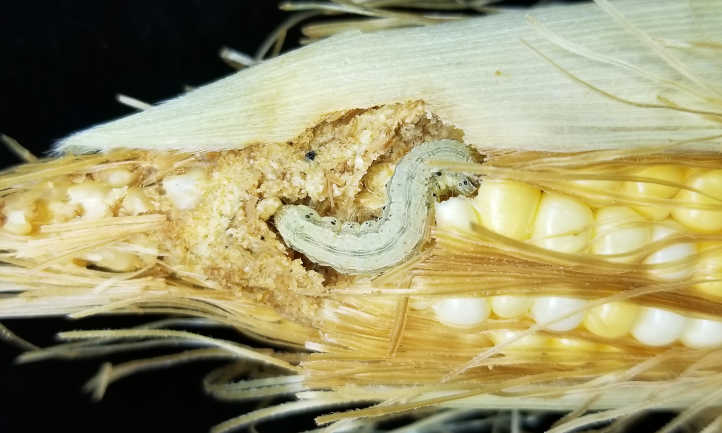
Now that we’ve spent some time exploring these insects, let’s discuss how to control them in your garden. We’ll finish off by talking about how to prevent cutworm infestations altogether.
Cultural Control
There are a couple of basic things which any gardener can do to eliminate all species of cutworms. Obviously, handpicking the larvae or adult moths out of the garden at night and throwing them in soapy water is one choice, since that’s when they’ll be most active. Tilling the soil several inches around where cutworm larvae may have overwintered can expose them and allow birds to eat them, as well.
Since a cutworm larva wraps itself around the stem of a plant and chews its way through, a popular means of environmental control is to block the cutworm from being able to encircle the stem. Use toothpicks, nails, or pieces of drinking straw. Place them against the stem in a triangular pattern, and block the cutworm. Another option is to use cardboard collars in the form of toilet paper or paper towel tubes, or from plastic bottles. Press about an inch of the tube under the soil, encircling your seedlings. Ensure the seedlings are in the very center of the tube to allow for airflow around the stem. This offers your seedlings protection from cutworms and other insects as well.
Add beneficial nematodes to your garden. These consume both cutworm eggs and larvae, quickly stopping their spread. They also build up in your soil and provide an extra layer of protection against other pests, such as root-knot nematodes.
Biological Removal of Cutworms
A common option for any sort of caterpillar prevention is to use Bacillus thuringiensis, also known as Bt spray. This soil-dwelling bacterium is used as an organic insecticidal spray, and poisons cutworms quite effectively. The bacteria also assist in the destruction of cutworm eggs. Encourage the natural predators of cutworms by planting plants that tachinid flies and brachonid wasps appreciate. Tachinids enjoy parsley, Queen Anne’s Lace, aster, cilantro, dill, fennel, and more. Brachonids prefer catnip, feverfew, chamomile, sweet alyssum, and the buckwheat plant. These feed on cutworms, either as adults or in their larval stage, keeping infestations low.
Insecticidal Removal of Cutworms
Granular products that you spread around your plants and contain a very low percentage (2%) of carbaryl insecticide are effective too. These bait and draw in insects with chewing mouthparts (like cutworms, grasshoppers, and the like). They’re harmless to birds and most beneficial insects, but they aren’t available in all areas. While neem oil doesn’t kill cutworms, it coats the eggs and makes them less likely to hatch. If you’re waiting impatiently for another product to arrive and have neem oil around, it can at least slow impending outbreaks of cutworms a little bit. Spray these in the morning before the sun rises, and avoid spraying in hot weather 90°F or warmer.
Preventing Cutworms
Popular because of its wide and varied uses, food-grade diatomaceous earth is a natural powder often used against cutworms as well as a myriad of other insect pests. Its crystalline structure is harmless to humans and pets, but causes cuts in the soft skin of caterpillars, causing them to slowly dehydrate and die. Spread this on the soil while cutworms are in their pupal stage.
If you live in an area where toads are common, they will eat cutworms. Both you and the toads will benefit from this arrangement. This might not be the best option if you have dogs or kids who chase them back out of your garden. Birds assist with cutworm issues as well. Other modes of prevention include keeping your garden free of weeds, and preventing cutworm damage by removing plant debris from your garden annually. As the time when cutworms are two inches or more arrives, keep an eye on your young plants and remove them ASAP.
Frequently Asked Questions
Q: How do you get rid of cutworms?
A: The second half of this piece addresses ways you can remove and prevent them. Check it out!
Q: How do you tell if you have cut worms?
A: Plants will be cut close to the soil line and the worms will feed at night.
Q: How did I get cutworms?
A: It’s a natural part of growing food. The adult moths emerge, find your crops, and lay egg masses which hatch, and voila! Cutworms.
Q: What do cut worms turn into?
A: Varying moths in the Noctuidae family.
Q: Do coffee grounds deter cutworms?
A: Although there’s a commonly held belief that they do, there’s no definitive proof coffee grounds are an effective prevention method. Plant collars are a better prevention method.
Q: How do you control cutworms organically?
A: There are several ways. Check out the Control section.
Q: What time do cutworms come out?
A: They come out after dark to feed under the cover of night.
Q: What do cutworm droppings look like?
A: Cutworms leave black pellets behind as they eat.
Q: Are grubs and cutworms the same thing?
A: They aren’t. Grubs are the larval form of varying beetles.
Q: Are cutworms harmful to dogs?
A: They don’t secrete any toxins, so don’t worry too much if your dog eats one.
Q: Do birds eat cutworms?
A: They do! In fact, they’re one of the best forms of control.
Q: How do you make a cutworm collar?
A: There’s a great explanation of plant collars in the cultural control section of this piece.
Q: Cutworms in my compost pile – is that bad?
A: Most likely, you are actually seeing the grub stage of the black soldier fly, which is beneficial in a compost pile. Black soldier flies devour food scraps and rotting plant material and produce castings much like red wigglers or other vermicomposting worms do. Those are wonderful amendments for your soil.

